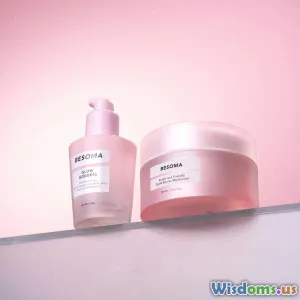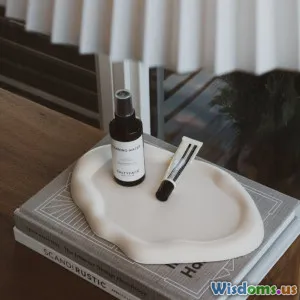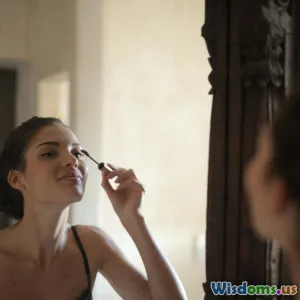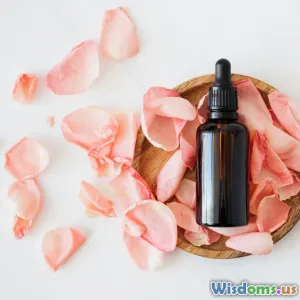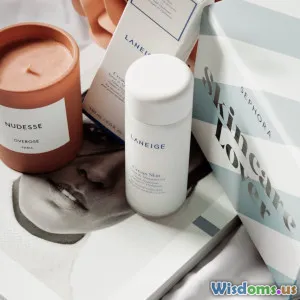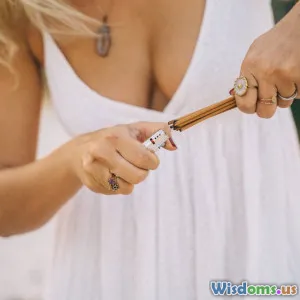
Timeless Beauty Tips from History
6 min read Explore beauty secrets from the past that remain effective today, blending tradition with modern practices for timeless allure. (0 Reviews)
Timeless Beauty Tips from History
Throughout the ages, beauty standards and practices have evolved, yet many timeless tips have prevailed, proving that wisdom often transcends time. This article delves into various beauty practices from history that have not only stood the test of time but are also practical for modern-day beauty regimens.
Ancient Egypt: The Beauty of Cleopatra
Cleopatra, the last active ruler of the Ptolemaic Kingdom of Egypt, was renowned for her beauty and charm. Her beauty rituals included:
-
Milk Baths: Cleopatra reportedly bathed in milk and honey to maintain her skin’s softness. The lactic acid in milk acts as a natural exfoliant, gently removing dead skin cells and promoting a healthy glow. Modern adaptations include adding powdered milk or honey to baths for a luxurious experience.
-
Kohl for Eye Definition: Ancient Egyptians used kohl to define their eyes, enhancing their natural beauty while also protecting against eye infections. Today, kohl eyeliner remains popular, and its origins reflect the blend of beauty and health.
Roman Innovations in Skincare
The Romans were pioneers in beauty treatments, with a focus on cleanliness and skincare:
-
Olive Oil: Used as a moisturizer and a base for makeup, olive oil is rich in antioxidants and hydrates the skin. Incorporating olive oil into your skincare routine, either directly or through products, can lead to improved skin elasticity and moisture retention.
-
Bathing Rituals: The Roman baths were not just for relaxation; they were also a place for beauty treatments, including scrubs, massages, and the application of essential oils. Recreating a spa-like atmosphere at home can lead to a rejuvenating experience, with the use of modern scrubs and oils.
The Renaissance: An Era of Refinement
During the Renaissance, beauty became a symbol of status and refinement, with various practices emerging:
-
Face Masks: Women often used masks made from natural ingredients like honey, egg whites, and herbs to nourish their skin. Today, DIY face masks using similar ingredients can provide nourishment and rejuvenation without harmful chemicals.
-
Natural Blush: Using crushed berries as a natural blush was a common practice. This not only provided color but also nourished the skin. Modern natural cosmetics have taken this idea further, offering products that maintain the spirit of these ancient practices.
Asian Beauty Secrets
Across Asia, beauty rituals have been meticulously refined over centuries:
-
Rice Water: Used by Japanese women for centuries, rice water is believed to enhance skin texture and tone. After washing rice, the leftover water can be used as a facial toner, rich in vitamins and minerals.
-
Green Tea: In China, green tea has been used for its antioxidant properties. Consuming green tea and applying it topically can reduce inflammation and promote healthy skin.
Native American Practices
Native American tribes had unique approaches to beauty, using natural resources:
-
Herbal Remedies: Many tribes employed herbs for skincare, such as sage and lavender, which possess anti-inflammatory properties. These can be easily incorporated into modern skincare routines as essential oils or herbal infusions.
-
Sun Protection: The use of natural minerals like clay for sun protection is a practice that resonates today with the rising popularity of mineral sunscreens.
Conclusion
The beauty rituals from history reflect a deep understanding of natural ingredients and their benefits. By integrating these timeless beauty tips into modern routines, individuals can enhance their natural beauty while honoring the wisdom of those who came before us. Whether it's choosing natural skincare products or embracing the simplicity of ancient remedies, these historical practices remind us that beauty is not just about appearance; it’s about well-being and confidence. As we navigate the complexities of modern beauty, let us draw inspiration from the past and create a regimen that celebrates both history and individuality.
Rate the Post
User Reviews
Popular Posts










